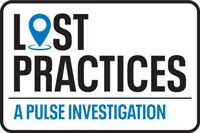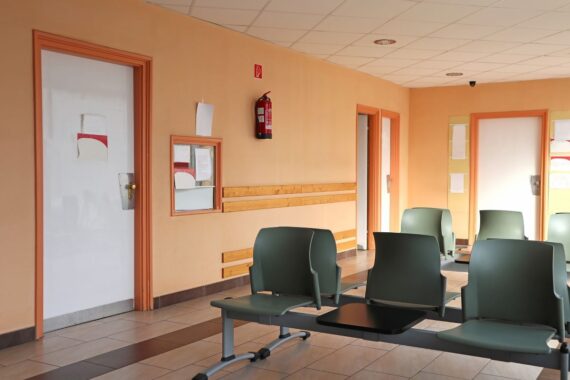
The biggest factor in determining the permanent closure of a GP practice is size, a major investigation by Pulse into practice closures has revealed.
Our Lost Practices investigation, which looked at the reasons behind the closure of around 470 practice and branch surgeries in the past nine years, found the median list size of those that closed was 2,738. This compared to a median list size of 6,279 for all open practices in 2014-15.
The straightforward explanation for this is that smaller businesses are often at greater risk than larger ones, which is the case in most sectors, and it is true practice mergers have helped some practices to stay open. But some GPs say that smaller practices can and should be viable in their own right – not least because they so often provide continuity of care and greater patient satisfaction.
Yet the failure to replace small practices may be a de facto national policy. When Dr Arvind Madan resigned from his position as NHS England’s director of primary care in 2018 over his comments that there were ‘too many small practices’ struggling to meet patient demand, NHS England was insistent that his comments were not a reflection of wider policy.
But federations, super practices and primary care networks all focus on GPs working at greater scale, with smaller organisations subsumed into larger ones.
This move to larger healthcare providers is happening in Shrewsbury. There are controversial plans to move six small practices with a combined 40,000 patients into a single location – while retaining their individual identities. The proposal has sparked two protests so far – with patients concerned about having to travel further, maintaining contact with their regular GP, and the loss of what they consider to be their local practice, according to reports in the Shropshire Star.
Last month, five retired GP partners also wrote to the clinical lead of the hub programme, Dr Charlotte Hart, with concerns around the new centre. They said: ‘As regards the Hub, it is self-evident it is going to be huge to cope with 40,000+ patients. The waiting room alone will be airport lounge size, never mind the car park with on some days up to 2,000 visits… not everyone has access to a motor vehicle during the working day. Lack of transport links are obvious.’
Dr Hart replied: ‘You seem to imply a large building is a bad thing but I’m not sure why. The architects propose a building that is light and spacious and easy to navigate.’
Gateshead and South Tyneside LMC chair Dr Paul Evans says: ‘In a singlehanded practice, when one goes, that is it, the contract has to be handed back.’ But he points out that smaller practices are not alone in struggling: ‘In our patch, there’s a practice of about 12.5k that is struggling to recruit and the partners are working extremely long hours, and one of about 7.5k that’s gone from four partners to one in the space of five years.’
He adds: ‘I think if small practices have a future, then they do need – in urban areas at least – to collaborate with neighbours on projects of mutual interest. But I don’t think that should mean they can’t be independent – I think there should be viability to smaller practices.
‘There is evidence that small practices tend to offer better continuity and we know that continuity is associated with fewer admissions, better results on morbidity and mortality, and importantly patient satisfaction. A big theme of super practices is you never get to see the same doctor twice – if it’s a single-hander then by definition a patient will see the same doctor every time…’
Examples of small practice closures
• A CCG statement on the closure in 2019 of Leicester Road surgery in Coventry, which had 2,635 patients, said: ‘Leicester Road is one of our smallest contracts and we believe that the best use of our funding would be to support patients to find a different practice nearby.’
• Following the 2018 closure of 4,000-patient Woodrow Medical Centre in Redditch, the CCG reportedly said that ‘to be viable, a GP practice needs at least 6,000’. The CCG was unable to find a new provider so patients were directed to other practices, the closest 1.7 miles away.
• A CCG representative commenting on the 2020 closure of Brandon Estate practice in Southwark said its small list of around 3,000 made it ‘less financially viable and unlikely a provider would be interested’, adding that most practices have ‘at least 6,000 patients now’.
• Dr Prabhakar Kusre – a singlehanded GP for 28 years in Milton Keynes – told the Milton Keynes Citizen local paper on his retirement in 2019: ‘I wanted to retire, but I didn’t want to see [the practice] close down. Unfortunately, things are different now, they don’t want small practices.’
Workload and staffing
It will come as no surprise that workforce and workload problems play a part in closures. The profession has lost 1,806 fully qualified FTE GPs since September 2015. There are less staff to do the job – and for those that remain, the pressures are increasing all the time, with closures themselves adding more workload where neighbouring practices must absorb the extra patients.
This was highlighted in the closure of Victoria Medical Centre in Bridgewater, Somerset, last year, which was forced to shut due to ongoing clinical staffing shortages. Commissioners had spent 12 months trying to find a solution. Commenting on the closure local MP Ian Liddell-Grainger said transferring patients to other health centres would only ‘add intolerably to the pressures their staff are currently working under’ and that this could only be a ‘stop-gap solution’.
Somewhat surprisingly our investigation found that in practices that permanently closed the number of patients per GP was only slightly higher than the national average. But more important were the GP numbers – the median was 1.5 FTE GPs, which is also in keeping with smaller practices being at risk.
GPs leaders said all practices have intense workloads but those with fewer GPs are less likely to withstand the loss of a GP through burnout or any other reason.
Dr Richard Vautrey, former chair of the BMA GP Committee, says: ‘Practices get to the point where they are not able to recruit, fewer GPs are left seeing more patients and that places them in an impossible situation, leaving them to look for alternatives which is often to merge with another practice or disperse a list altogether.
Dr Evans adds: ‘There’s a point when everyone has to ask the question can I keep doing what I’m doing…do I need to cut down my sessions if there is a concern that the job may actually literally kill me? We know that the hours and the stress are not necessarily conducive to good health.
‘I know plenty of GP partners whose typical working day is 12-14 hours and many of these are people of my age or a little bit older or younger who can’t retire now. But we would all be daft to not at least be taking a look at the alternatives for that day when we can’t keep going.’
Examples of closures due to workload and recruitment challenges
- A statement on the 2020 closure of Eagle Way surgery in Southend reads: ‘The last five years have seen a huge increase in regulation and bureaucracy and huge increases in the workload involved in running two surgeries.
- A singlehanded GP in Kent had decided to retire because they ‘could no longer cope with the demand of 12-hour shifts’. The GP said they had spent three years trying to make arrangements for the future of the surgery.
- In 2019, Eveswell Surgery in Newport – which had served its community for 70 years – closed after struggles recruiting. A local news article said the remaining two partners had been sharing the workload since 2017.
Pulse July survey
Take our July 2025 survey to potentially win £1.000 worth of tokens













Not all small practices are bad. Not all big ones are either. Quality and quantity at loggerheads. And, you can’t compare Fortnum and Mason and Tesco, or fresh orange juice and the cordial. They have zero consistent evidence that super sized Hubs and conglomerates “work” – they just buffer the storm better, and hide things easier. Those savvy business minded GPs in the know, and in the CCG, fearless of closures and unafraid to let the standards drop, because what they gonna do, who they gonna go for? Not them. What is going on is yes, mergers and acquisitions. And then – a blockade of sell offs to third party buyers for a nice sum. Just like in dentistry. Nice work CQC and NHSE, not so smart plan coming for you though. Keep patching it up with the allied roles. You know the dirty narrative and climate they created of “working at scale”. It’s like eating at scale. But, that is all good. As vacuums of empty high streets and loneliness continue to seed through this land this country will find it hard to find anyone even remotely bothered to pick up the heat of General Practice. You know what that ugly heat is that you suck up everyday. Build back better. Or just close it all down – and dissolve the small business, whether you’re a pharmacist, chippie or butcher. You called them bullies at school. Same lot in leadership at DoH and NHSE. The corporate US juggernaut has won. UK is the dogs tail. But rabid dogs can eat their tails too. So you can sit back and sip cocktails and watch the cookie crumble as they siphon off procurements and smell the meat. Let the evolution play out. I’ll call it dissolution. Not innovation, but eradication. The only problem is, they don’t realise what the public truly is about, and you do, because you covered it up from them for so long. So this will be fun to watch. It’s going to get a whole lot spicy.
It’s sad that our elected leaders have this much disdain for the population.